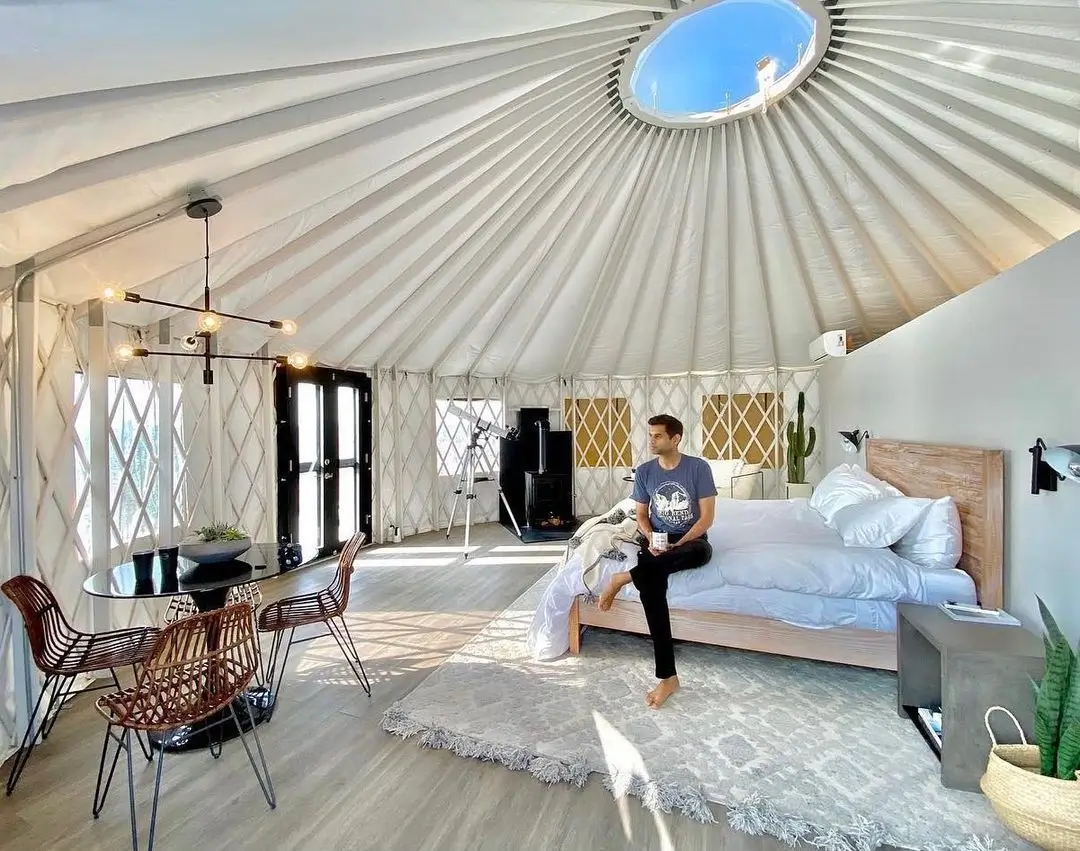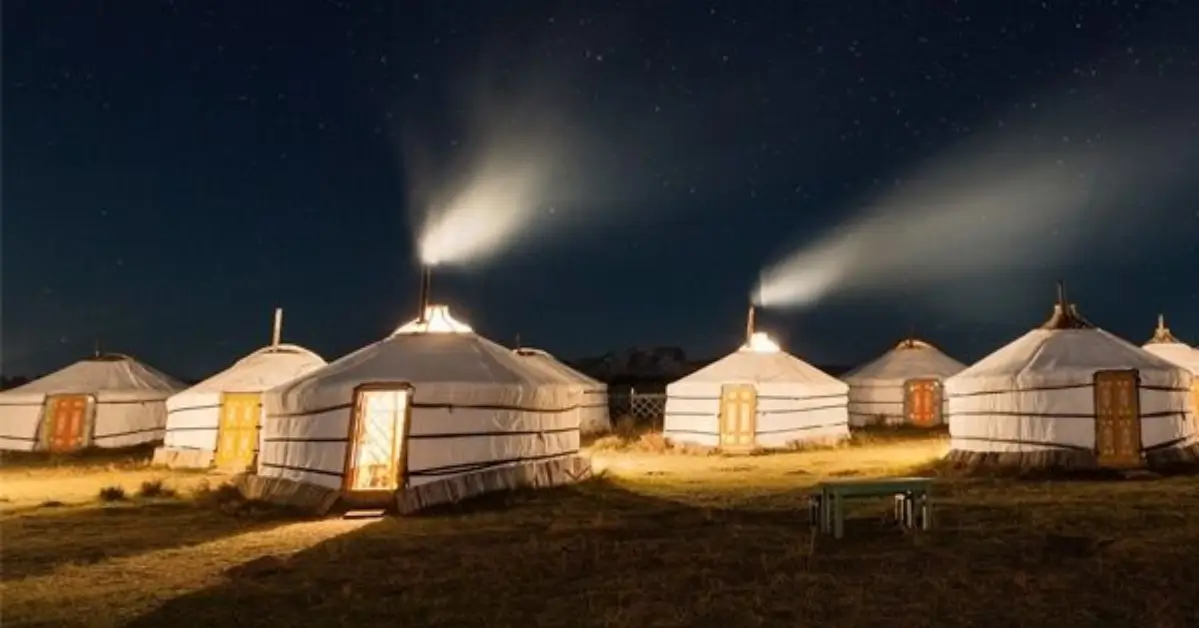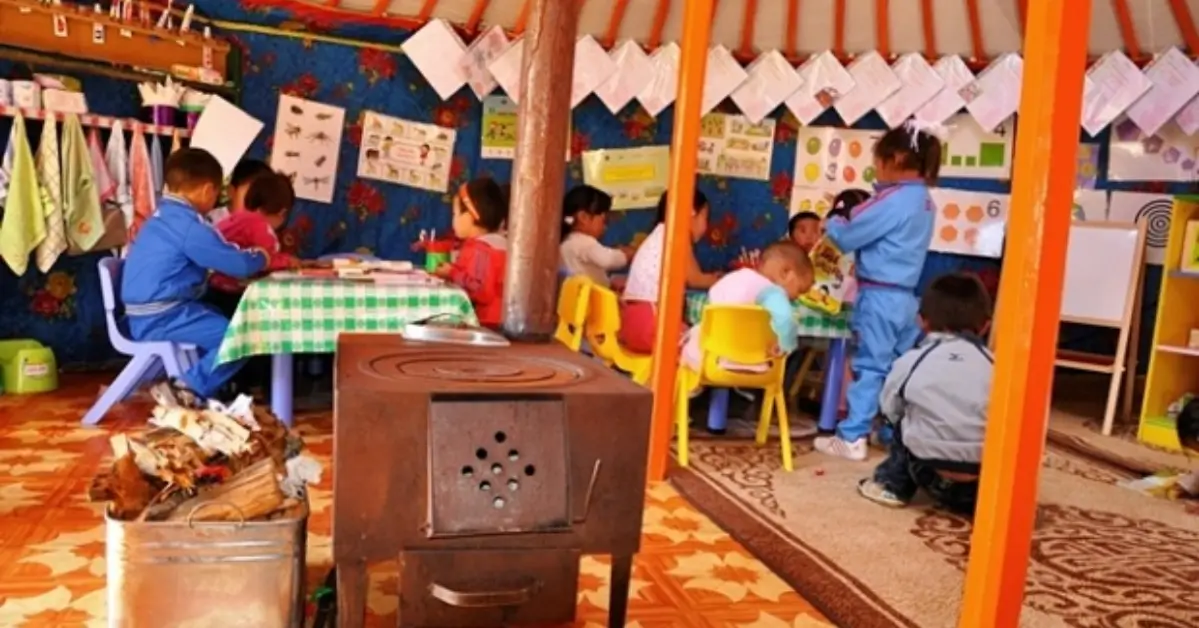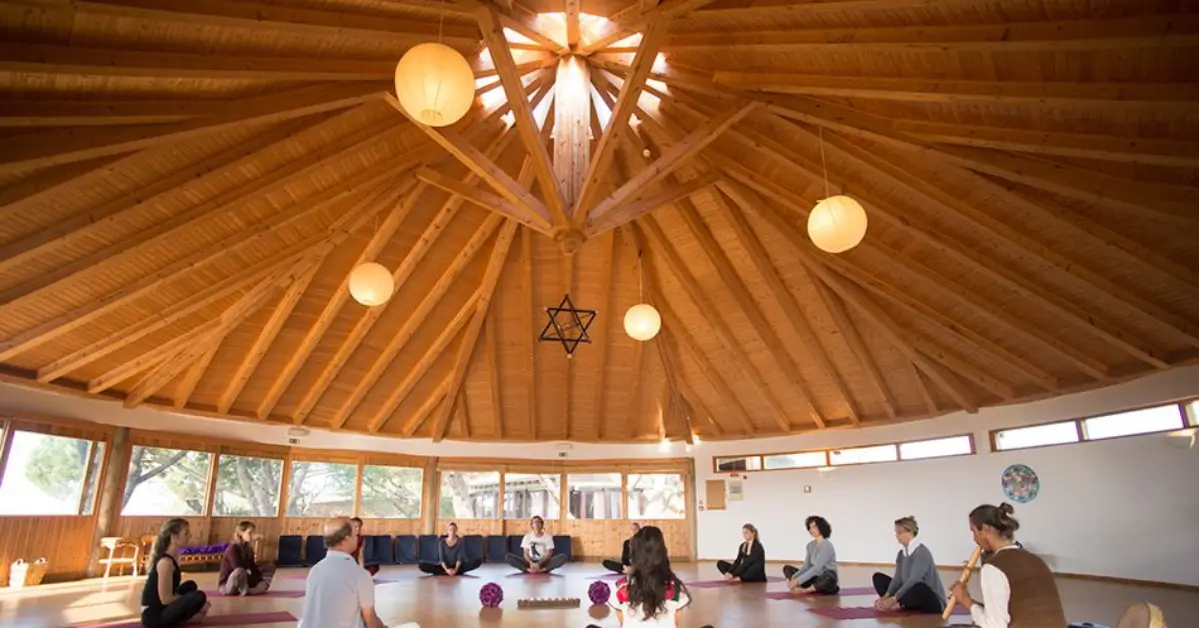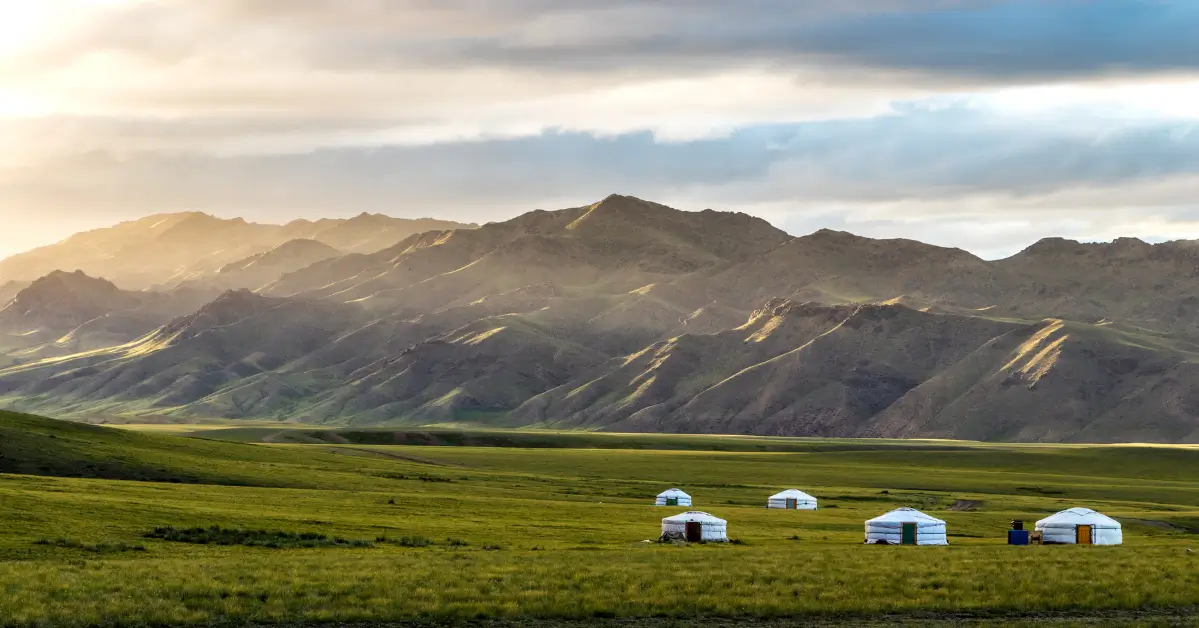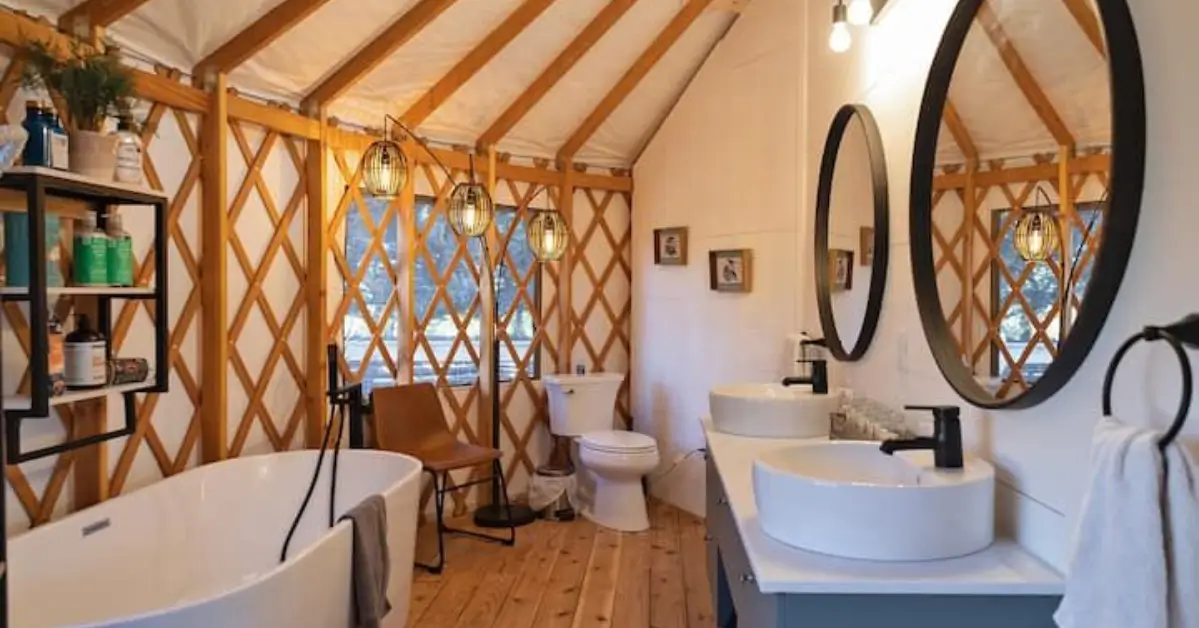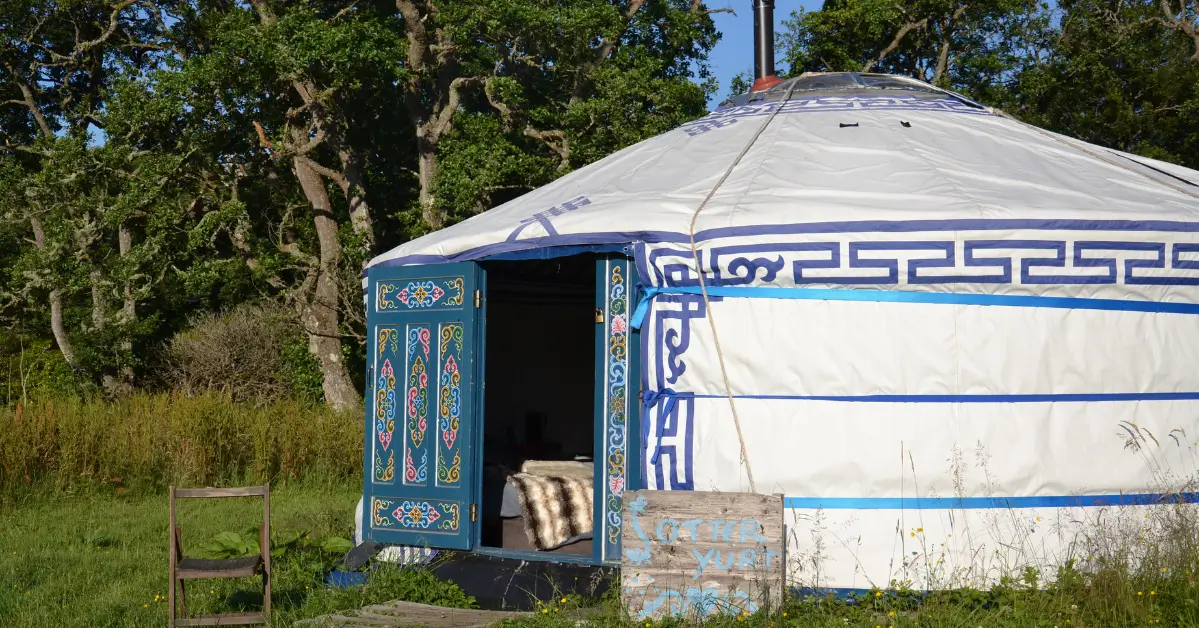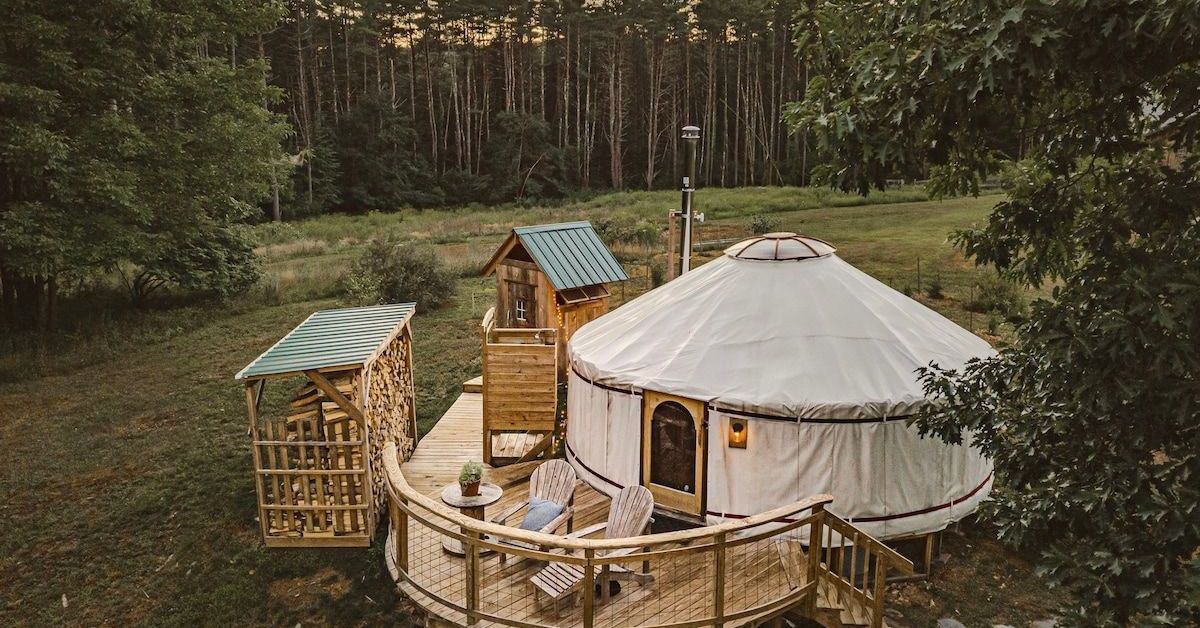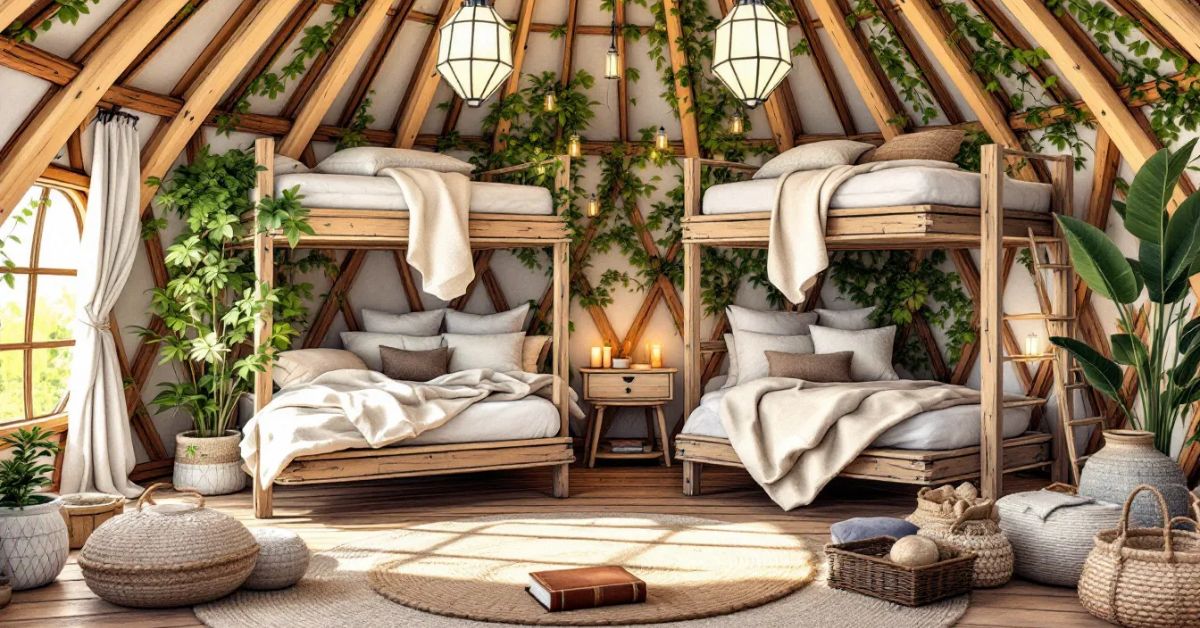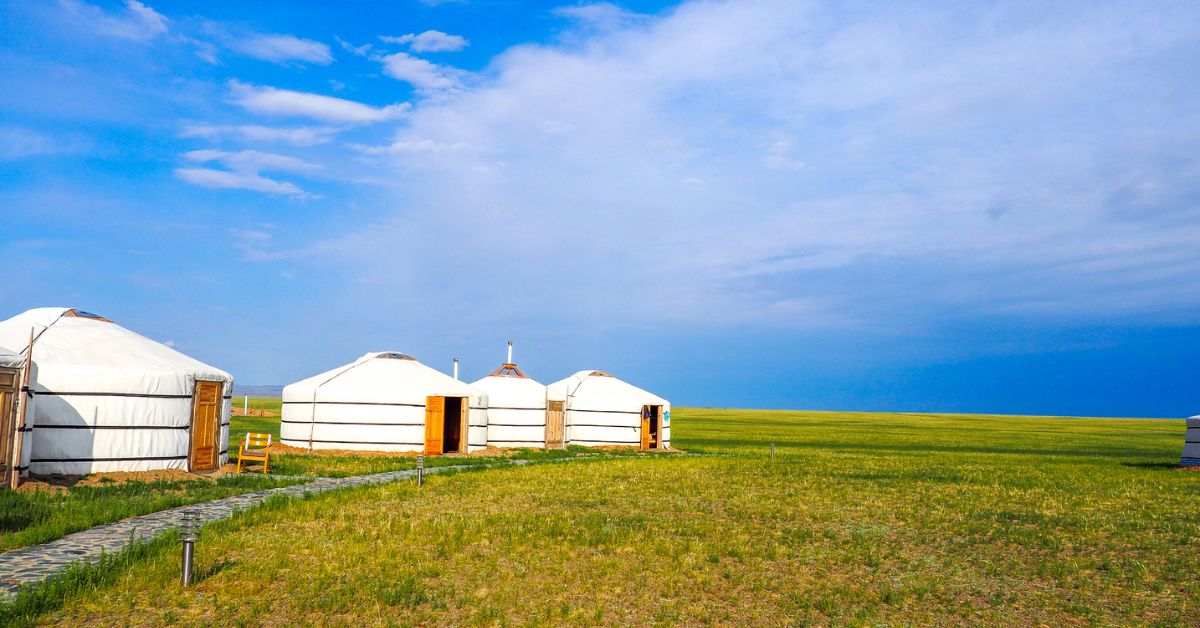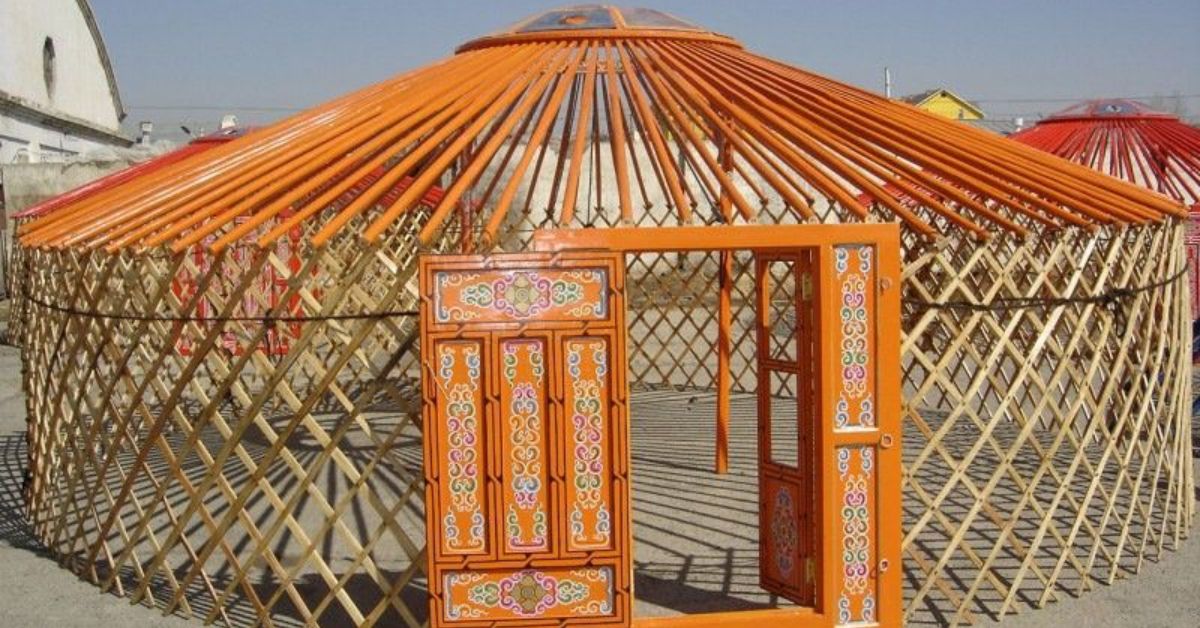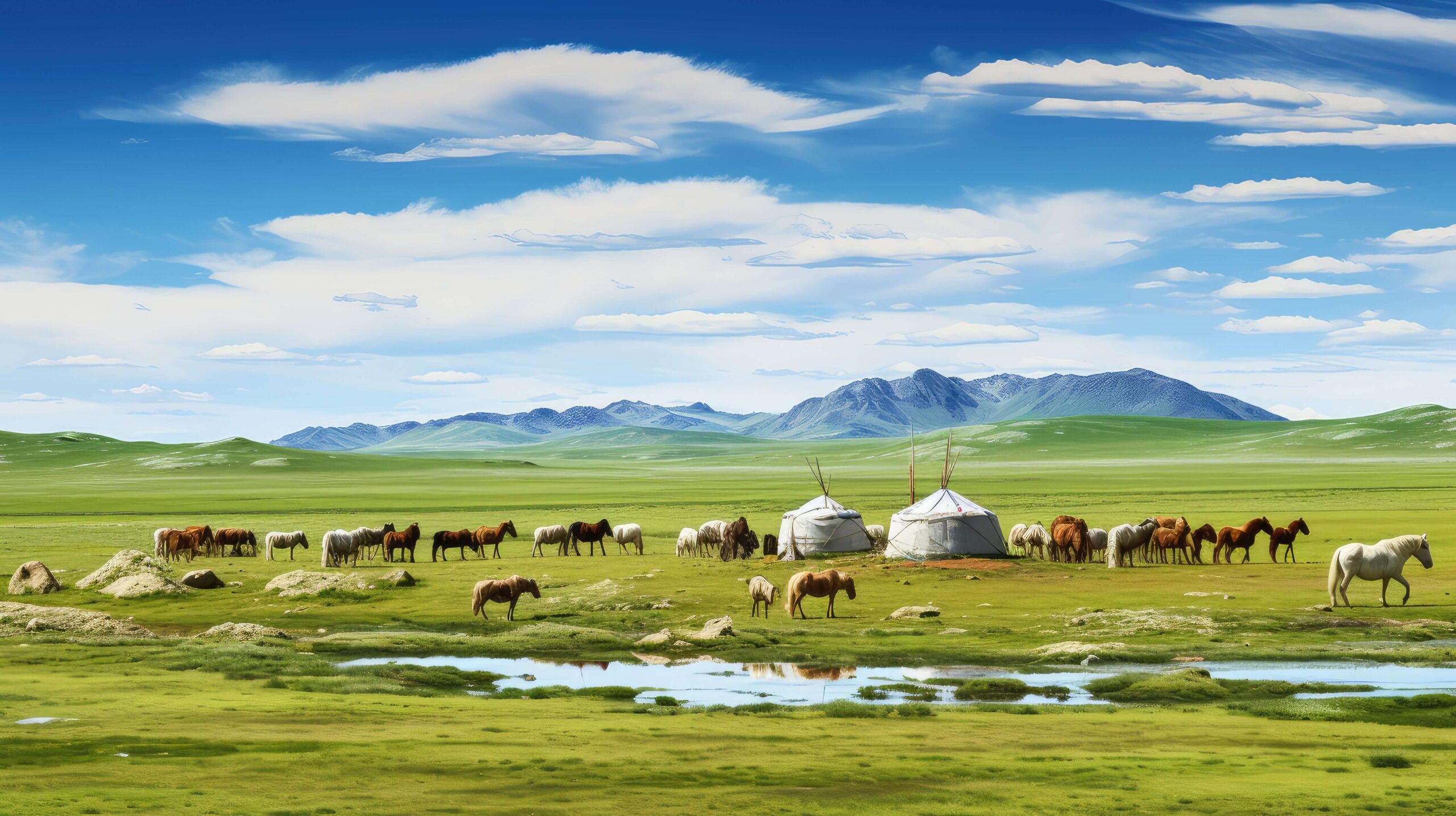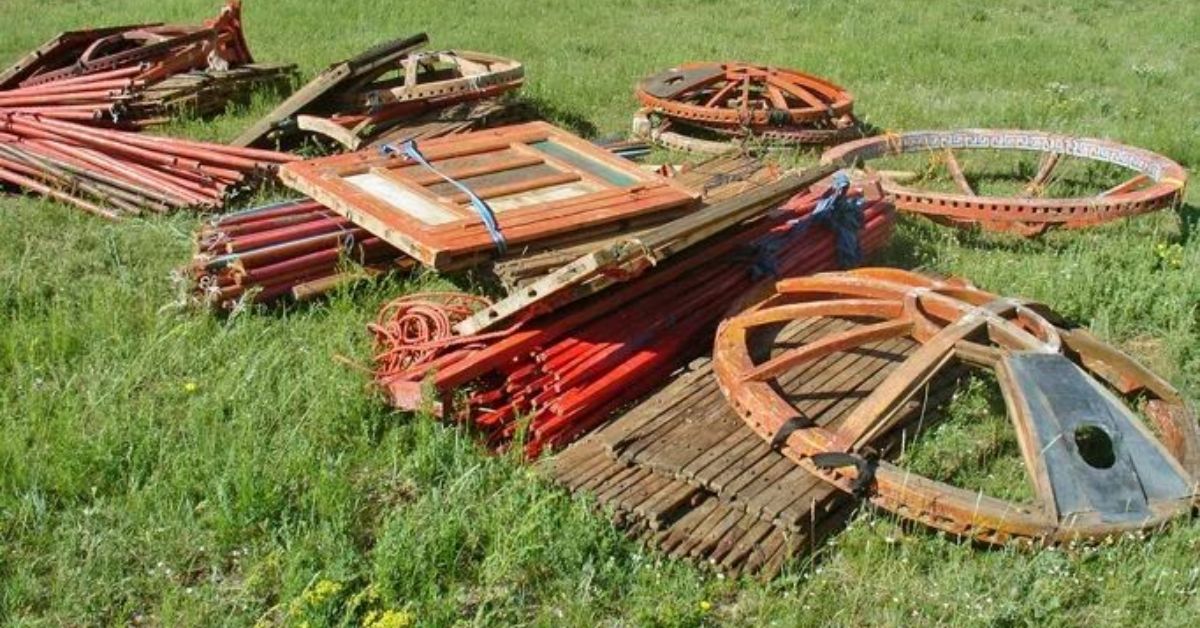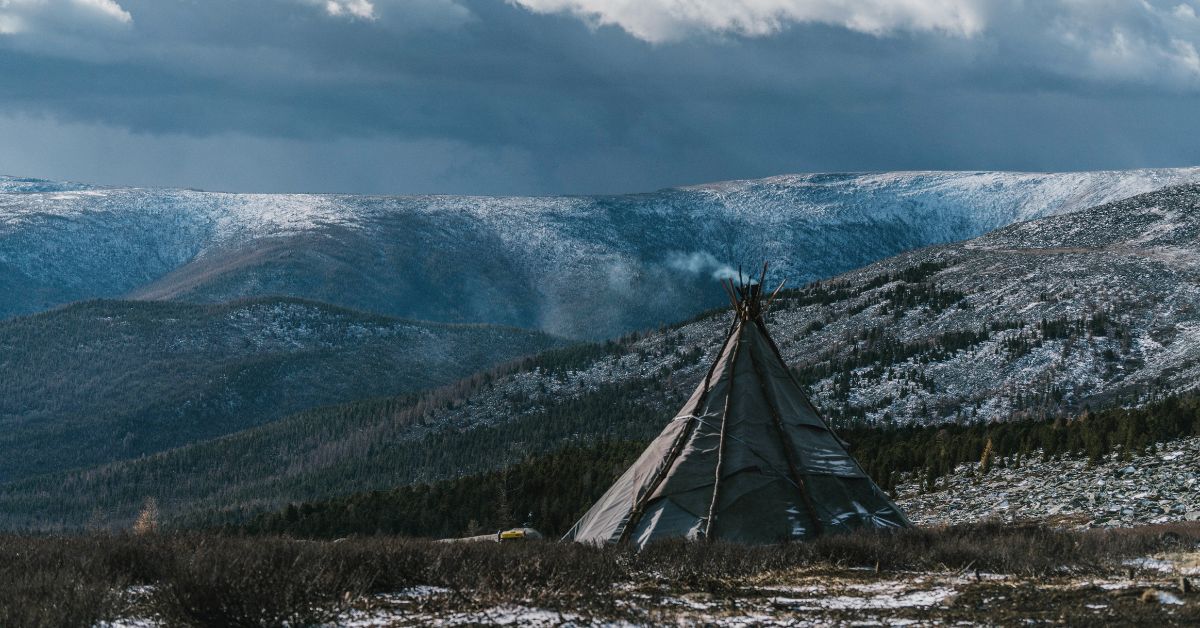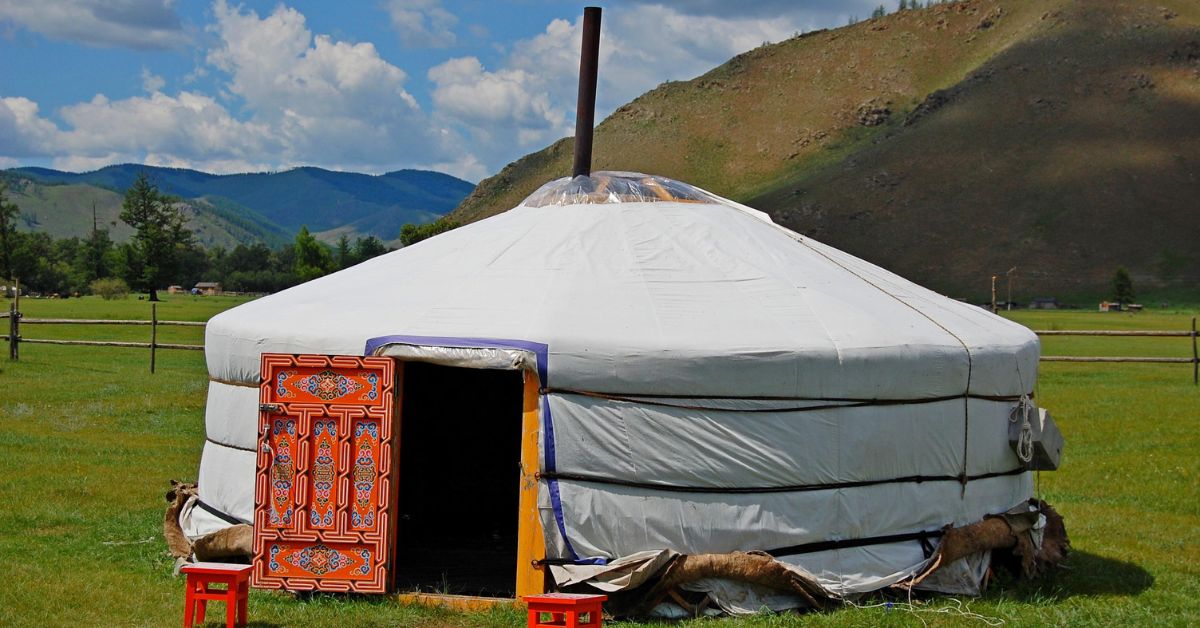What is a Yurt or Ger
What is Yurt as we know A Mongolian Ger, also spelled Mongolian yurt (outside of Mongolia), is a circle dwelling or round tent-like structure that was used by the Central Asian nomadic people of Mongolia in central Asia particularly Mongolia, for 3000 years.
Mongolian traditional yurt are made of wool felt or cotton and have a wooden frame. The roof is covered with felt, and the sides are generally concealed by a canvas cover. For thousands of years, Central Asian nomads have relied on yurts for their lightweight and portable nature, enabling them to move easily across vast terrains.
The Mongolian yurt or Ger is portable and can be easily dismantled and easily transported. The design of the yurt reflects the practical needs of nomadic tribes, who required shelters that could be easily dismantled and transported.
The development of the Mongolian ger is deeply tied to the history of the Mongol Empire, Modun Shanyu and Genghis Khan, who utilized these structures during their expansive conquests.
Yurt construction was named an Intangible Cultural Heritage in 2013 by UNESCO. Nowadays we still live in traditional yurts for exact purposes like:
- Home
- Yurt Camping
- Pacific yurts
- Yoga etc

The Mongolian ger & yurt is an important part of the culture and history of Mongolia. For centuries, the nomadic people of Mongolia have lived in yurt kit gers, and they continue to do so today. Nomadic Herders entire family could live in one Yurt.
The ger is a comfortable and practical home for the Mongolian nomads. It is warm in the winter and cool in the summer.
What are the pros and cons of living in a yurt?
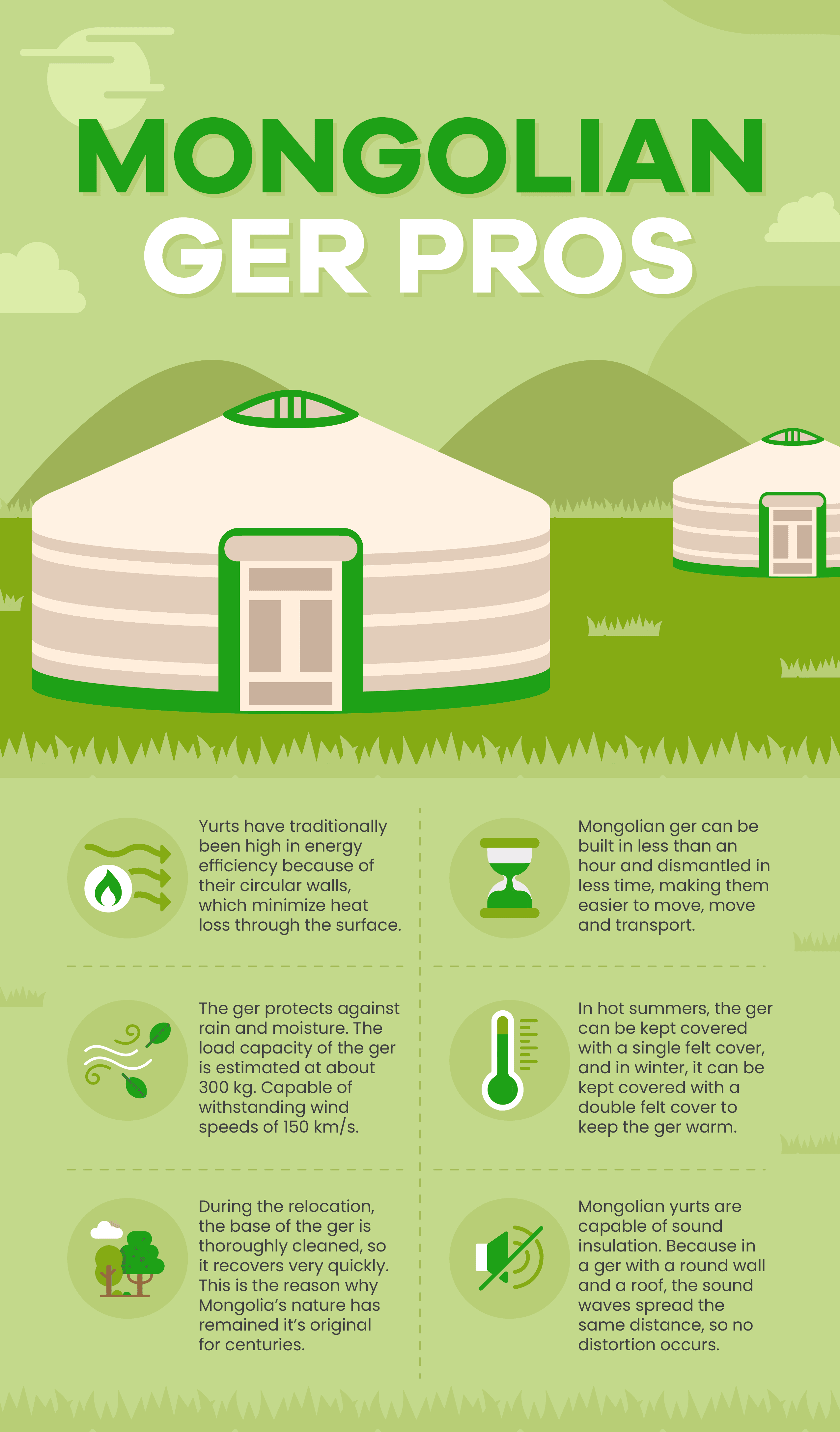
Mongolian Ger dwellings have traditionally been high in energy efficiency because of their circular wall and circular shape, which minimize heat loss through the surface. In addition to their smaller carbon and construction footprints, yurts are more suited to a natural environment.
Modern yurts often incorporate modern materials like aircraft cables, waterproof vinyl, and metal framing, which enhance their durability and suitability for long-term use.
Mongolian Yurts For Sale
Buy Mongolian Yurts without extra cost
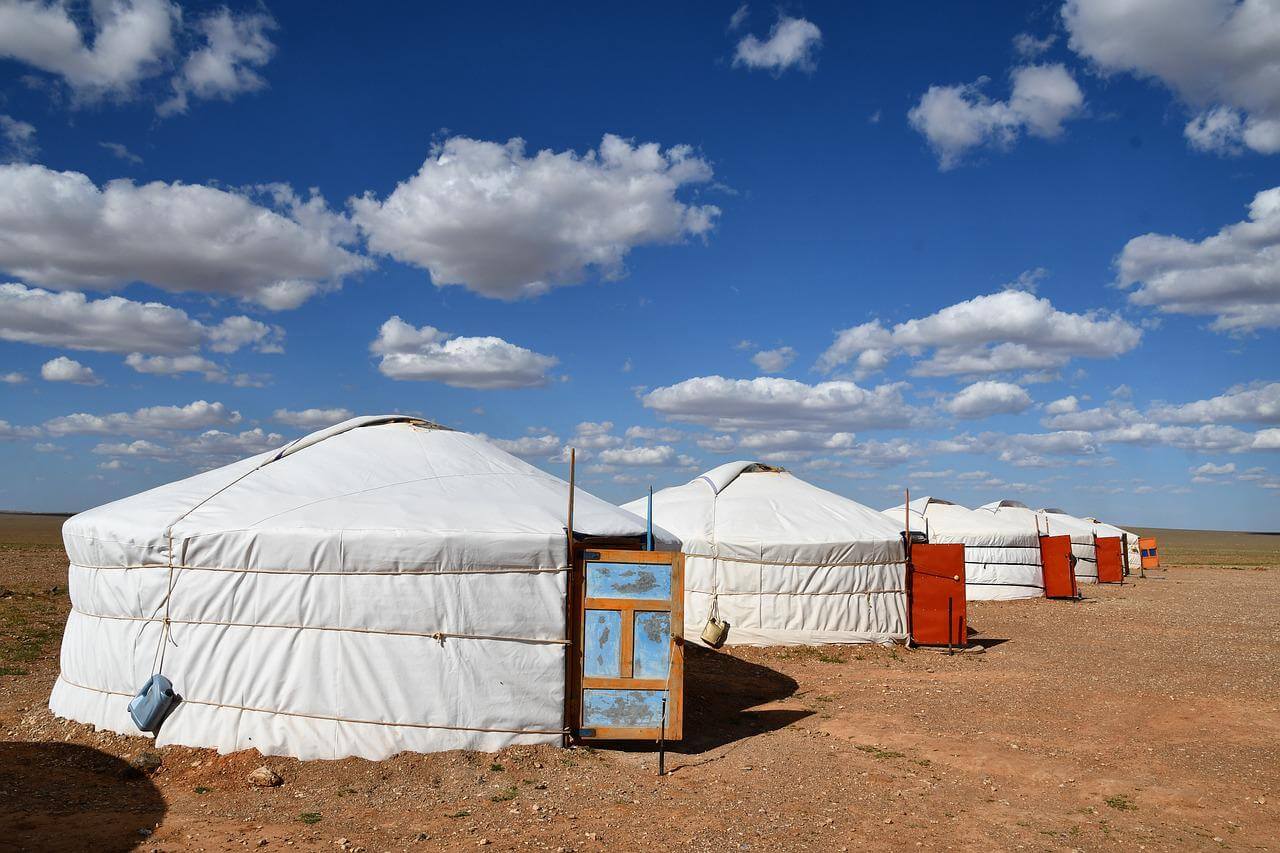
- Can be adjusted according to weather conditions – In hot summers, the ger can be kept covered with a single felt cover, and in winter, it can be kept covered with a double felt cover to keep the ger warm. It also protects against rain and moisture. The load capacity of the ger is estimated at about 300 kg. Capable of withstanding wind speeds of 150 km/s.
- Mongolian yurts can be built in less than an hour and dismantled in less time, making them easier to move, move, and transport.
- Structure Modification – The basic components of a Mongolian yurt consist of many parts, so you can use this quality to make the desired changes. For example, put two doors in one ger, combine the doors, build the ger side by side, and make a pressed window on the wall outside the door.
- Economic Advantage – As home size increases, so do maintenance, heating, and servicing costs. Yurts are a more economical solution in the long run.
- Ecological Advantage – Yurts have a lower ecological impact than traditional houses. They use fewer resources to build and require less energy to heat and cool. During the relocation, the base of the ger is thoroughly cleaned, so it recovers very quickly. This is the reason why Mongolia’s nature has remained its original for thousands of years.
- Mongolian yurts are capable of sound insulation. Because in a Ger with a round wall and a roof, the sound waves spread the same distance, so no distortion occurs. Therefore, there is a growing trend to make a recording studio in a Mongolian yurt.
Cons of Living in a Mongolian Yurt
There are a few potential drawbacks to living in a Mongolian yurt. First No bathroom in Mongolian yurt! You will have to get used to the experience of living without indoor plumbing. Or you can make a bathroom using your own idea in modern yurts.
Another potential downside is that yurts are more susceptible to weather damage, and they are not as fireproof as houses made of bricks and mortar.
Yurt sizes?
- 3 walls = 12′ feet / 3.7m diameter, floor area 113 sq.ft, 11 sq.m
- 4 walls = 16′ feet / 4.9m diameter, floor area 201 sq.ft, 19 sq.m
- 5 walls = 19′ feet / 6.1m diameter, floor area 283 sq.ft, 29 sq.m
- 6 walls = 22′ feet / 7.3m diameter, floor area 380 sq.ft, 42 sq.m
- 7 walls = 26′ feet / 8.5m diameter, floor area 551 sq.ft, 57sq.m
- 8 walls = 29′ feet / 9.6m diameter, floor area 660 sq.ft, 72 sq.m
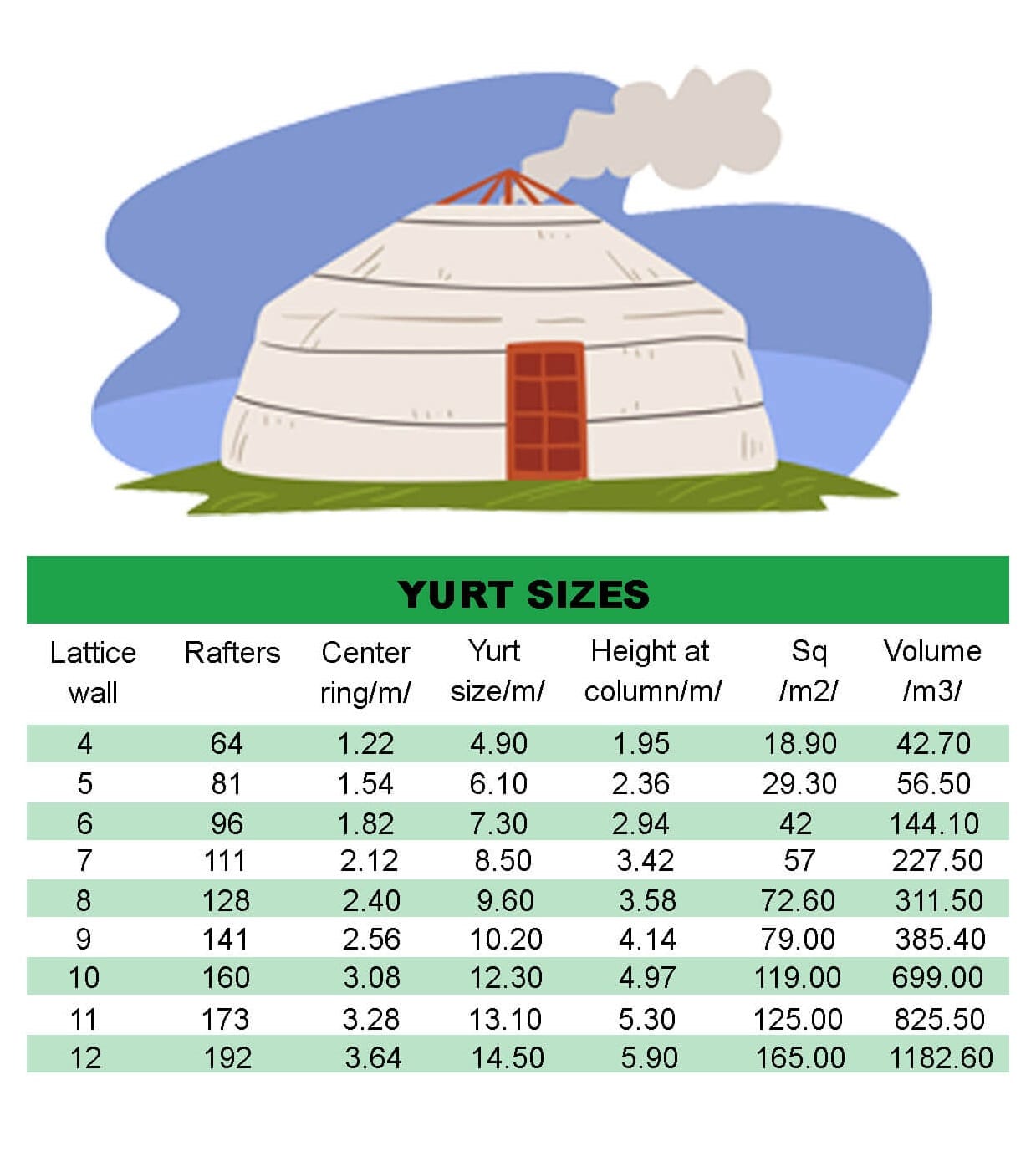
There are many benefits to living in Mongolian Nomads’ ger and tiny homes. Mongolian or Yurt living is comfortable and practical, and they can be adapted to a variety of settings and climates.
Yurts can be used as vacation homes, office spaces, yoga studios, glamping, and more. And because they are so versatile, yurts can be adapted to a wide range of climates and landscapes.
Mongolian ger structure
The structure of the Mongolian ger is quite simple. Many rural Mongolians continue to live in traditional gers, which are portable felt tents covered in durable, waterproof white canvas. The interior features are all hand-crafted and hand-painted.
It is a round, wooden frame that is covered with felt or skins. The door is usually facing south, and there is a small hole in the center of the roof to allow smoke to escape.
While traditional Mongolian gers use straight poles for construction, bentwood yurts feature roofs made from bent wooden poles that are steamed and curved, resulting in a taller, conical roof shape.
Yurt structure consists of:
- Door
- Mongolian acrylic Toono (Yurt’s crown roof)
- Lattice walls
- Floor /Optional/
- Rafters/ Uni (part of the roof)
- Pillars
- Wooden poles
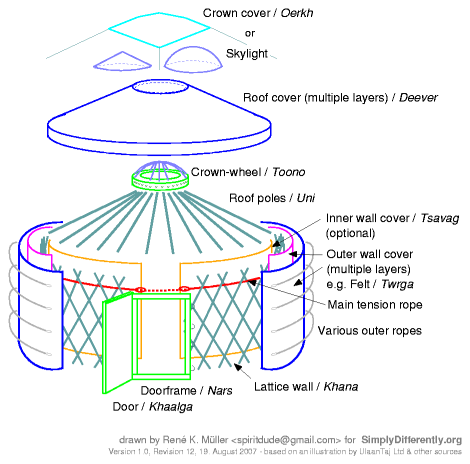
Gers are very easy to set up and take down, which has made them popular among nomadic people.
In addition, traditional yurts are very comfortable to live in, and they have a distinctively traditional feel. For these reasons, Yurts are an integral part of Mongolian heritage culture. Turkic yurts, on the other hand, have a unique roof construction with bent wood, setting them apart from other yurt types.
The traditional lifestyle of rural Mongolians and the integral role of gers in their culture highlight the construction, division of spaces, and historical significance of yurt offers these portable, circular dwellings.
If you are interested in what is inside a Mongolian Yurt? check this link.
How to pronounce “Mongolian Ger”
The word “ger” is pronounced, “gehr.” The “Mongolian” is pronounced, “mung-gahl-lee-uhn.” So, the complete phrase is “Mongolian ger.”
nced, “mung-gahl-lee-uhn.” So, the complete phrase is “Mongolian ger.”
Why do Mongolians live in yurts?
Mongolian nomads have been living in yurts for thousands of years because they are a practical and comfortable home for the nomadic groups.
Climate change has increasingly threatened this traditional yurt culture, with dry summers followed by harsh winters making it difficult for nomadic herders to sustain their livelihoods.
In Mongolia, yurt dwellers often share communal living spaces, meals, and resources, reflecting the social dynamics and cultural significance of yurts in their daily lives.

Today, Mongolian yurt is still used by Mongolians as a home. However, we have also become popular among Westerners who appreciate their simplicity and flexibility.
In urban areas like Ulaanbaatar, significant air pollution caused by the prevalent use of coal for heating and cooking has impacted the traditional lifestyle, leading many to abandon their gers.
Mongolian yurt, the circular dwelling has been a distinctive feature of life in Central Asia. Mongolian gers are an excellent option for those who want to experience minimalist living or live in a more traditional food environmentally-friendly way.
Mongolian yurt, the circular dwelling has been a distinctive feature of life in Central Asia. Mongolian gers are an excellent option for those who want to experience minimalist living or live in a more environmentally friendly way.
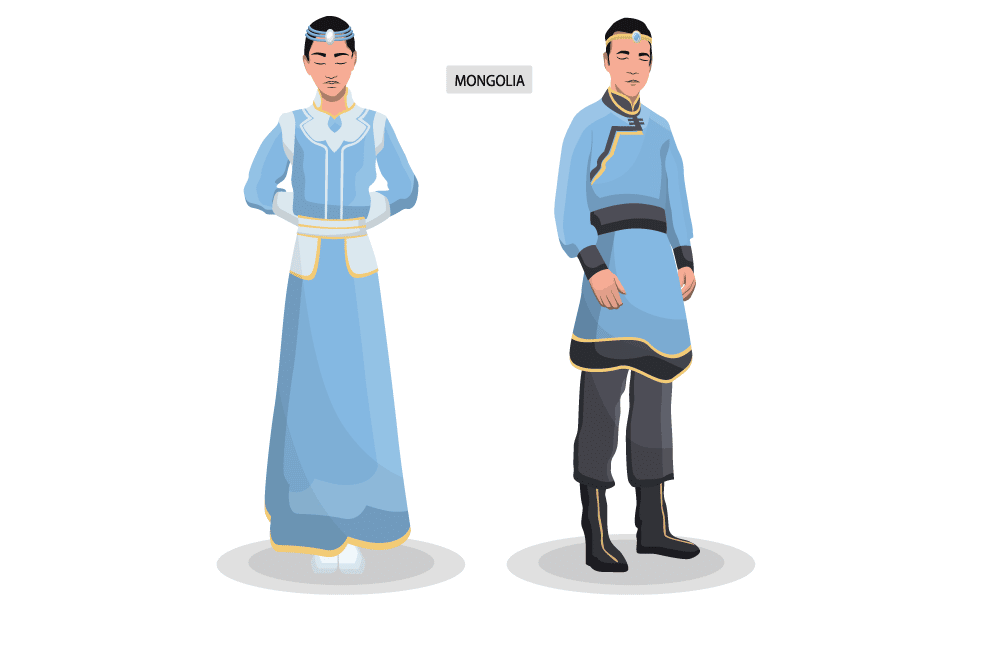
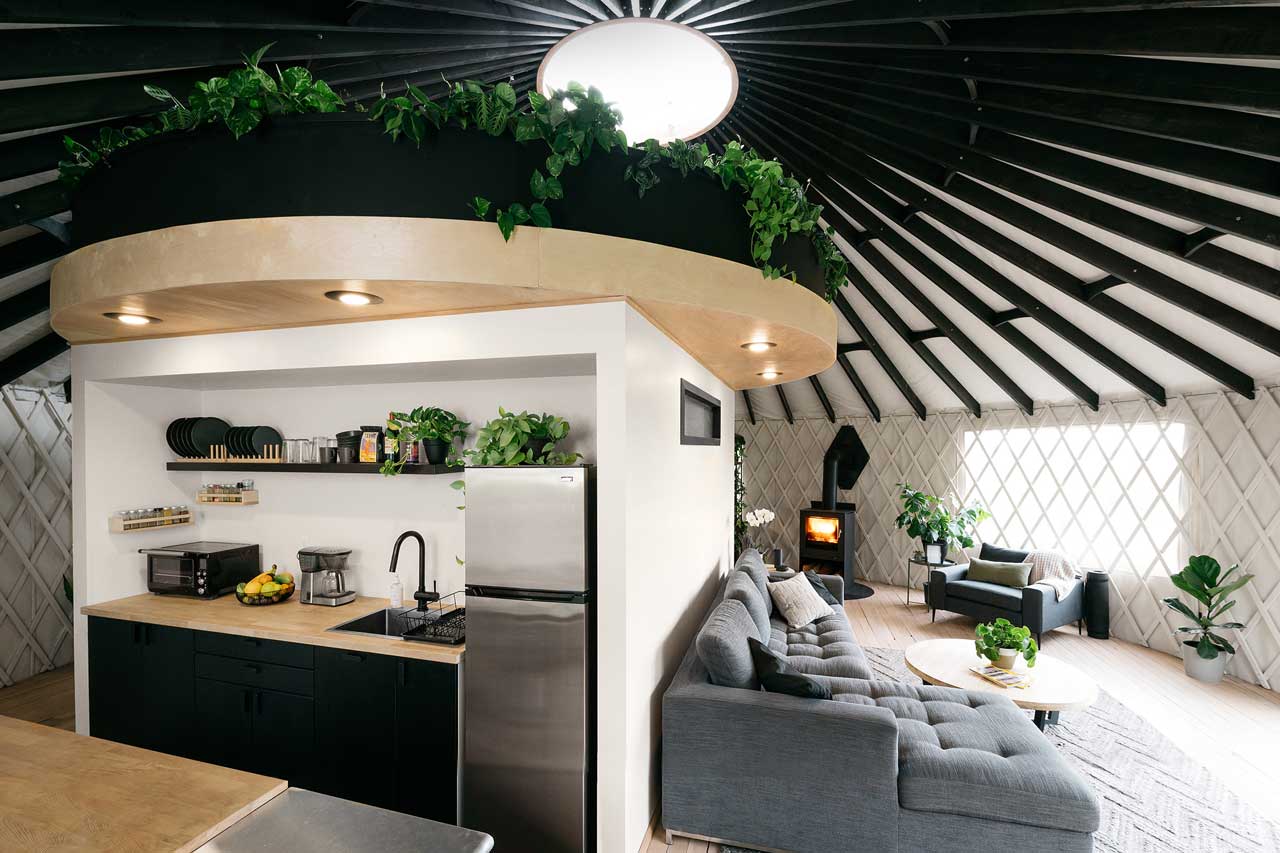
Mongolian Yurt can be outfitted with solar panels and other sustainable features. And because they are so versatile, yurts can be adapted to a wide range of climates and landscapes.
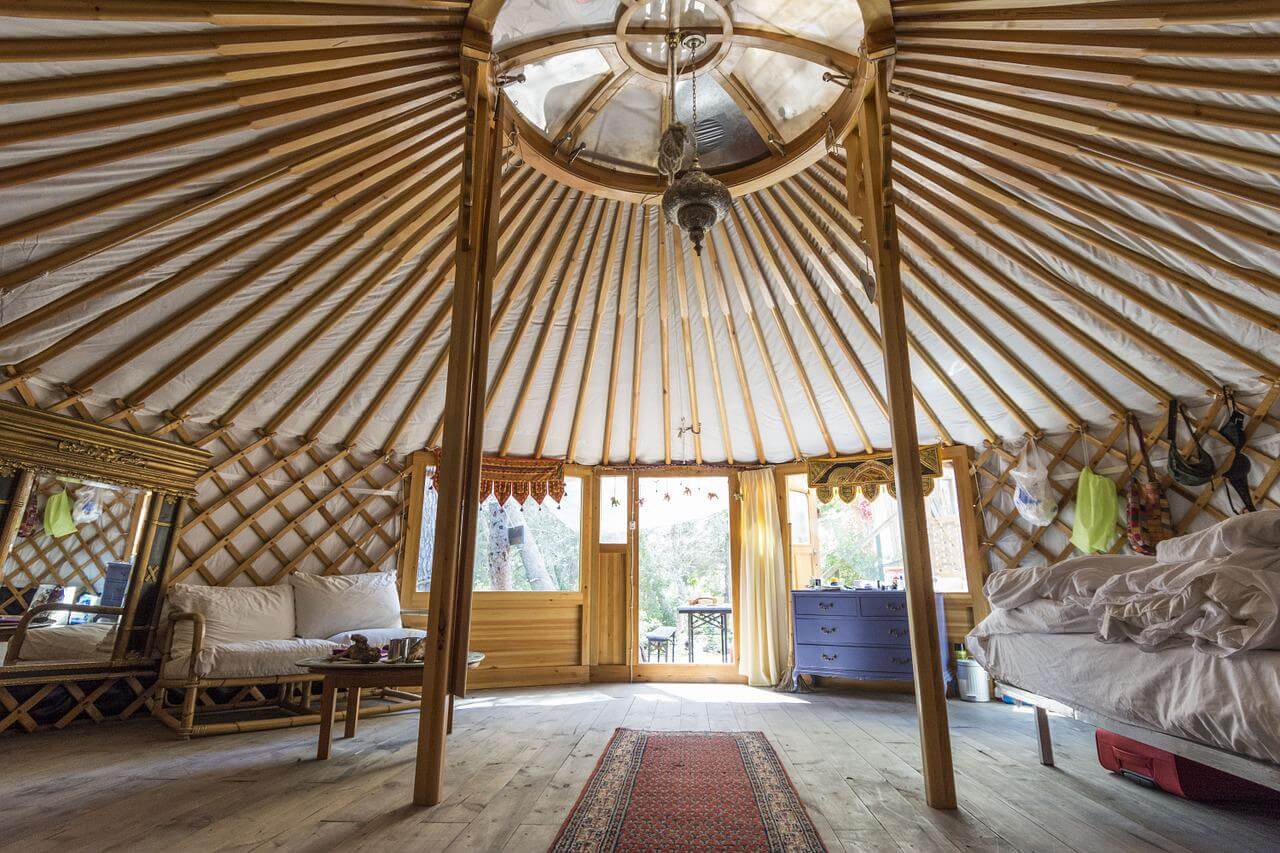
The usage and yurt culture of Mongolian ger dwelling
In Mongolia, the size of the Mongolian yurt is determined by the number of lattice walls. In Inner Mongolia, these traditional dwellings hold significant cultural importance. 3, 4 lattice wall yurts are suitable for permanent moving. In ancient times, 3, 4 lattice wall yurts were used to assist main large yurts.
In urban areas like Ulaanbaatar, yurt quarters coexist with modern structures, where residents often share resources and maintain traditional elements.
Especially, they were used as kitchens or sometimes as prisons. And 5, 6 lattice wall modern yurts are convenient for simple settled households or glamping.
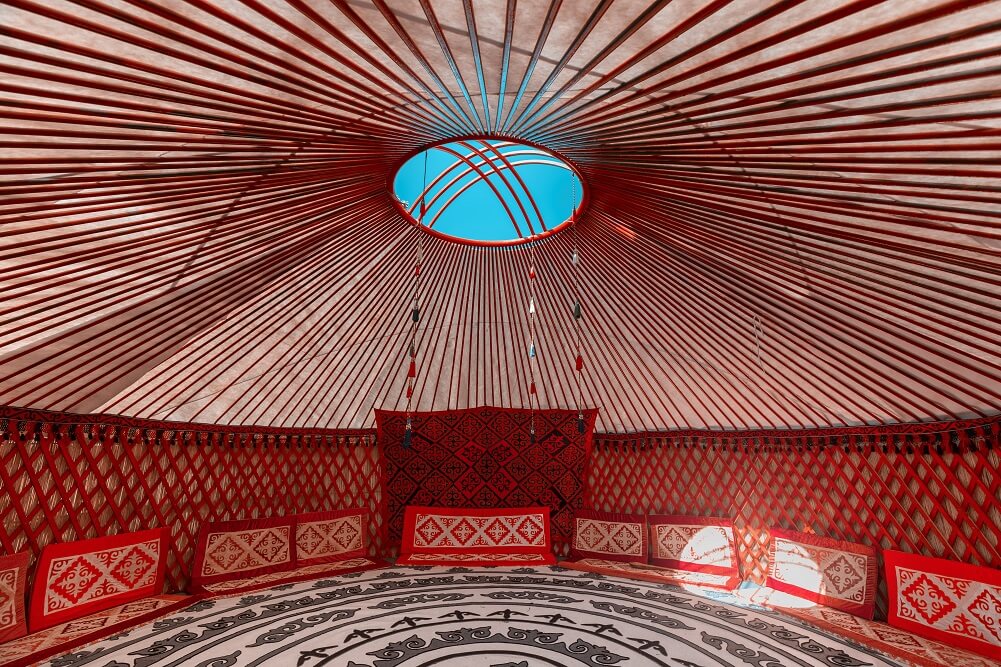
Finally, the 7, 8, and 9 lattice walls or Mongolian largest yurts can be used as tourist facilities for guests, meeting rooms, or recording studios in Mongolia.
Are yurts waterproof?
Yes, Mongolian yurt is waterproof. Three to five layers of felt are typical in most yurts, with an outer layer of waterproof fabric such as canvas covers. They are made from water-resistant materials and can be sealed against the elements.
In addition, the roof of the large yurt is designed to shed rain and snow. Mongolian Yurt provides a dry and comfortable living space even in inclement weather.
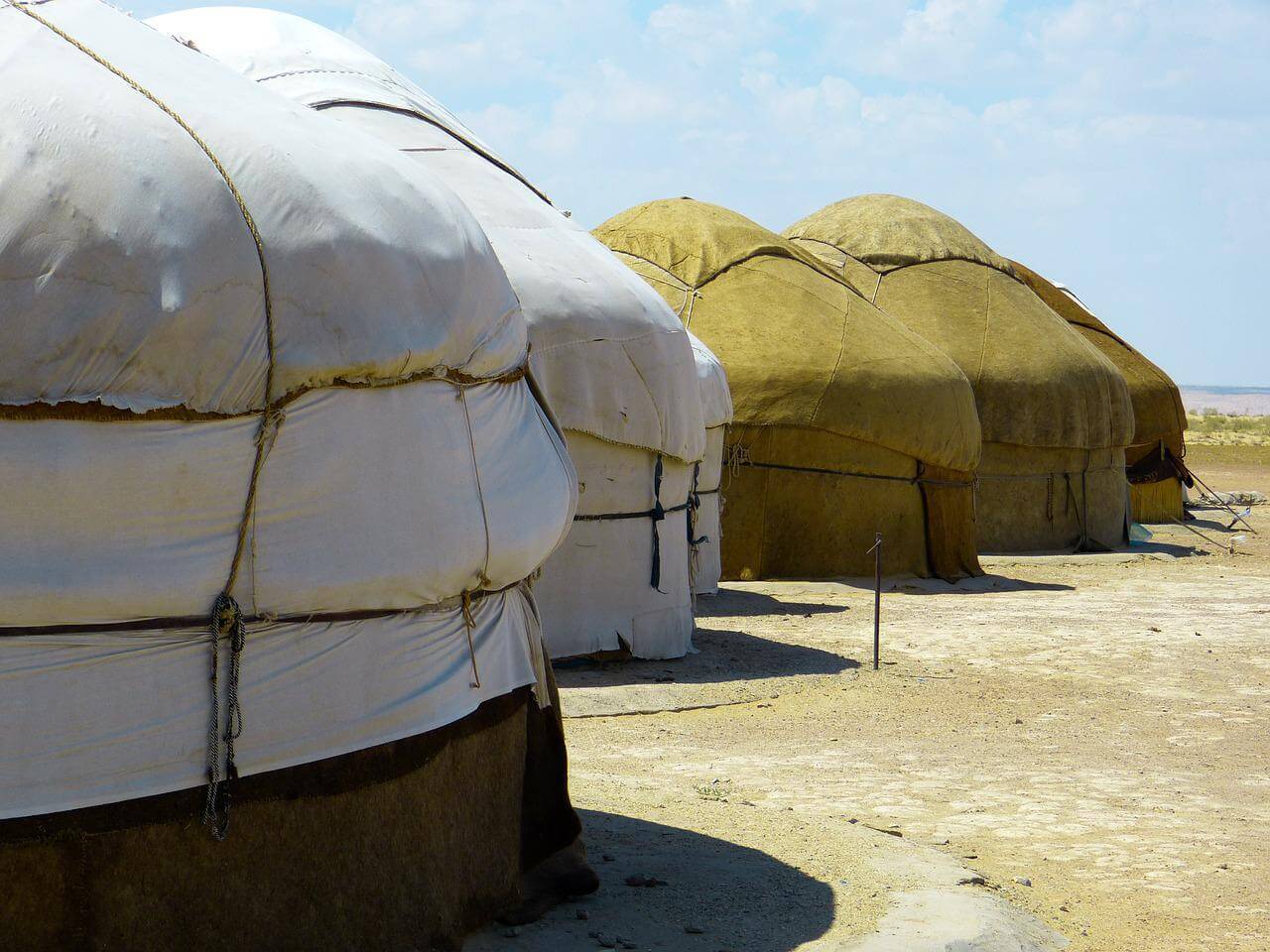
One way to keep water out of a yurt is to use a waterproof sealant on the exterior of the yurt. In addition, the roof should be designed to shed rain and snow. And finally, it’s important to ensure that the yurt is properly anchored to the ground.
Can yurts withstand high winds?
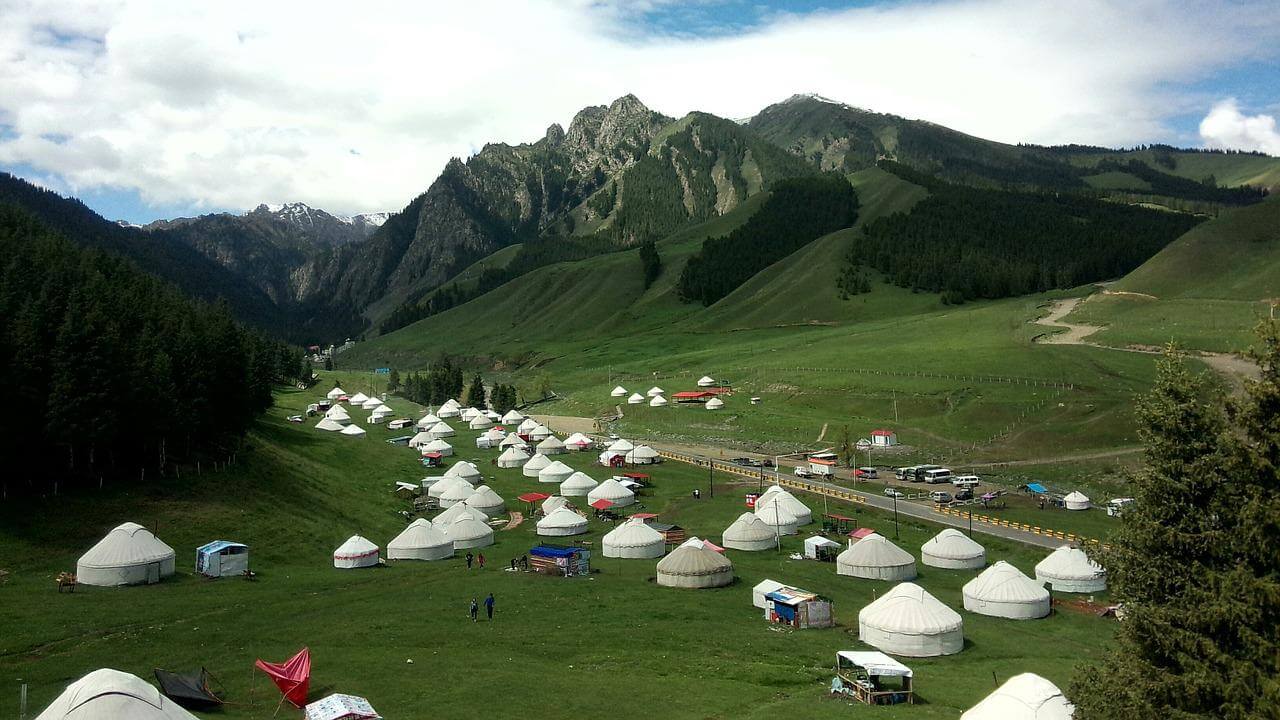
Yes, Mongolian yurt can withstand high winds. They are made from wind-resistant materials and can be anchored to the ground to prevent them from being blown away. In addition, the roof is designed to withstand strong winds.
What is the best way to heat a yurt?
There are a few different ways to heat a yurt. One option is to use a wood-burning stove. Another option is to use a propane heater. And finally, you can also use solar panels to generate heat.
Mongolian people usually use double-thick felt insulation in winter. The stove served only in the cold seasons. Here is a site that has some interesting facts about Mongolian sacred items, including stoves, morin khuur (a type of violin), and chests.
In Mongolia, we use wood-burning stoves in the summer. And in Winter we use wood and coal. Because It retains heat for a long time and can keep the house warm at whole night
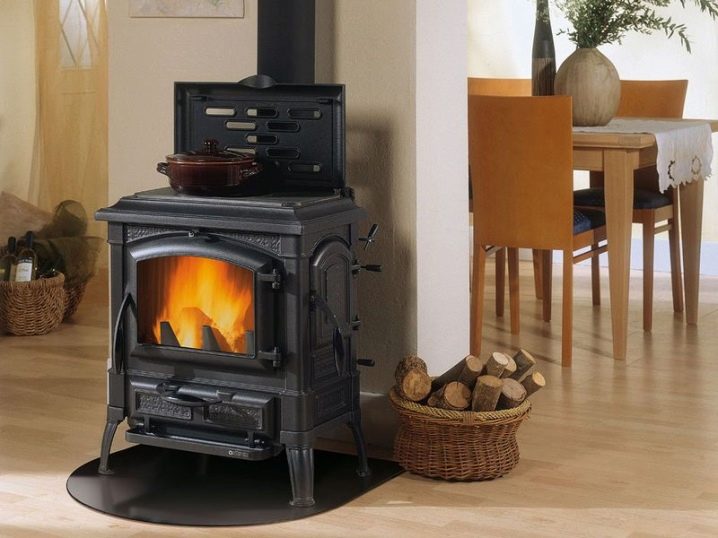
How long do yurts last?
With proper care, yurts can last for many years. The average lifespan of a yurt is 20 to 30 years.
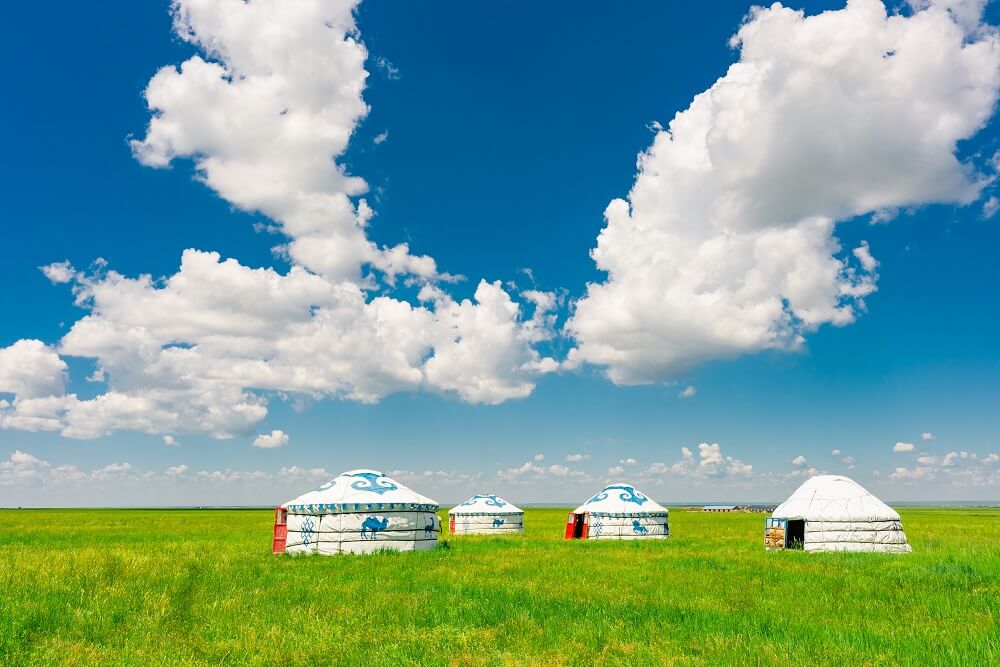
How much does it cost to build a yurt?
The cost of building a yurt varies depending on the size and features of the yurt. Generally, it costs between $3,000 and $5,000 to build a yurt.
Buy a Mongolian yurt
We can provide the best quality materials. Several yurts can be discounted.
Mongolian Yurts For Sale
Buy Mongolian Yurts without extra cost
or you can see detailed Mongolian yurts for sale here.
You can build a traditional Yurt by following these steps.
Here is a detailed Mongolian ger structure:
- Choose a spot to build your ger. The best spot is on high ground so that your Ger will be protected from flooding.
- Clear the area of any debris or rocks.
- Place the crown wheel in the center of the area you’ve cleared. This wheel will be used to support the mainframe of the ger.
- Construct the mainframe of the ger using wood poles /rafters/, lattice walls and beams. The wooden frame should be slightly taller than you are so that you can stand up inside the ger without hitting your head.
- Cover the wood frame with a /canvas/ layer of felt insulation material. This will help keep the inside of the ger warm. Also, this is made from sheep wool. In warm seasons, ger may be covered with only one layer of felt insulation.
- Hang a door frame on the front of the ger. The door can be made of wood, felt, sheep wool, or cloth. Finally, an outer cover will help you customize the amount of sunlight that comes into your home.
- A wooden floor can be made by choice. In Summer we can have a cooler wooden floor by using cork or bamboo.
- There are three top, middle, and bottom straps. They are circled and drawn tight after the outer cover is secured. 3 walls Ger can be an only two straps. By the way, Traditional Mongolian Yurt straps are made from Horse hair.
- Decorate the inside of the ger with colorful rugs and tapestries. You can also hang lanterns from the ceiling for light.
- Move in and enjoy your new home!
Building a yurt can be a rewarding project, especially for those looking to enhance their camping trip with a unique and comfortable accommodation.
Though the Mongolian government is pushing for more people to move into permanent homes, a large percentage of the rural population still lives in traditional Mongolian gers. In fact, according to a 2012 census, almost half of the country’s population of 3 million still live this way.
There are a number of reasons why so many people in Mongolia continue to live as nomads. First, the country’s harsh weather conditions make it difficult to sustain year-round agriculture, so many people rely on herding for their livelihoods.
Finally, for many Mongolians, the nomadic lifestyle is simply a way of life that has been passed down through generations. Though it can be challenging, living in harmony with nature is an important part of Mongolian culture.
Traditional Mongolian ger vs yurt difference
The only distinction is the roof, Mongolians call it ‘Toono‘. A Mongolian Ger is a more traditional Mongolian yurt design. In fact, “yurt” is a Russian term for what the Mongolians call a Ger.
The roof of a Ger is constructed of straight poles (uni) attached to the circular crown. The walls are made of latticework and the doors are often wood. Outer cover /sun cover/ is made from felt, and sheep wool.
Most families keep a collage of photographs of relatives and close friends at the back of the ger, which is considered the most important part of the dwelling. Guests are often invited to sit in this area, emphasizing its significance to the families living in the ger.
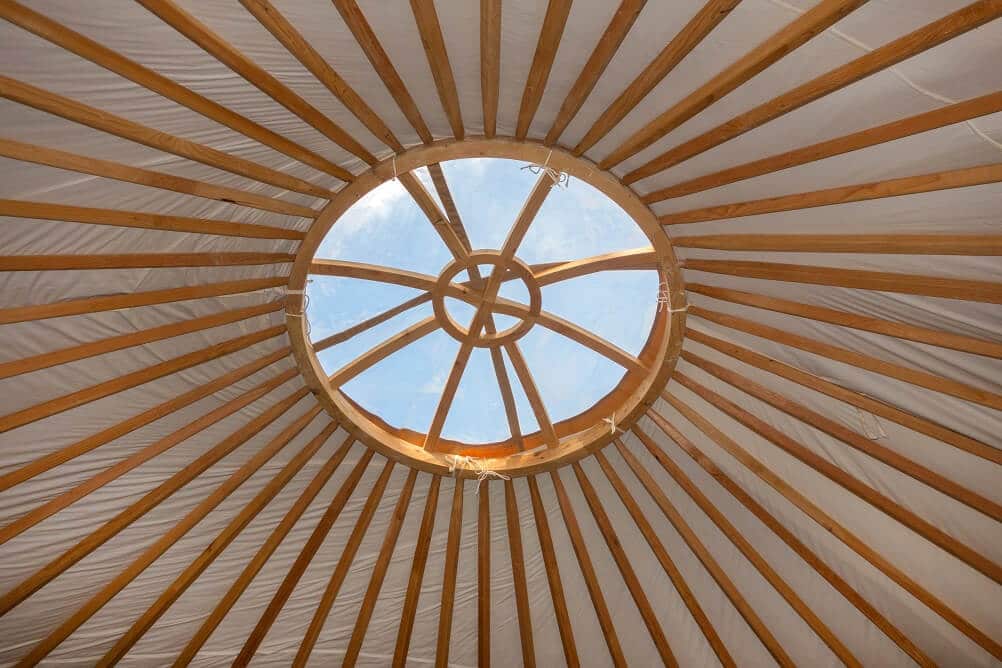
The yurt, on the other hand, has a curved roof (to shed snow better), and the walls are constructed of bent poles.
The wooden door itself is usually wool felt. Another difference between the two is that Mongolian Gers are more likely to be found in Nomads, while yurts are more common in Turkic countries such as Kazakhstan.
The word “yurt” comes from the Turkic languages, or sometimes people also it comes from Russia and it is believed to be of Mongolian origin. The “Ger” comes from the Mongolian language and it means “home.”
Related content:
- Mongolian beverages
- 5 interesting Mongolia facts
- Most Popular 10 Mongolian food
- Yurt for Sale
- What is inside a yurt?
- History of Mongolian ger 5 interesting facts
- Mongolian Yurt Customs
Share to Public

